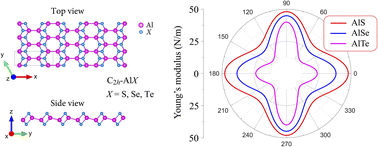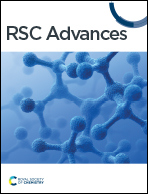New C2h phase of group III monochalcogenide monolayers AlX (X = S, Se, and Te) with anisotropic crystal structure: first-principles study
Abstract
In this paper, we introduce a new phase of two-dimensional aluminum monochalcogenide, namely C2h-AlX (X = S, Se, and Te). With the C2h space group, C2h-AlX possesses a large unit cell containing 8 atoms. The C2h phase of AlX monolayers is found to be dynamically and elastically stable based on the evaluation of its phonon dispersions and elastic constants. The anisotropic atomic structure of C2h-AlX leads to a strong anisotropy in its mechanical properties with Young's modulus and Poisson's ratio strongly dependent on the directions examined in the two-dimensional plane. All three monolayers of C2h-AlX are found to be direct band gap semiconductors, which are compared with the indirect band gap semiconductors of available D3h-AlX. Particularly, the transition from direct to indirect band gap is observed in C2h-AlX when a compressive biaxial strain is applied. Our calculated results indicate that C2h-AlX exhibits anisotropic optical characteristics and its absorption coefficient is high. Our findings suggest that C2h-AlX monolayers are suitable for applications in next-generation electro-mechanical and anisotropic opto-electronic nanodevices.



 Please wait while we load your content...
Please wait while we load your content...